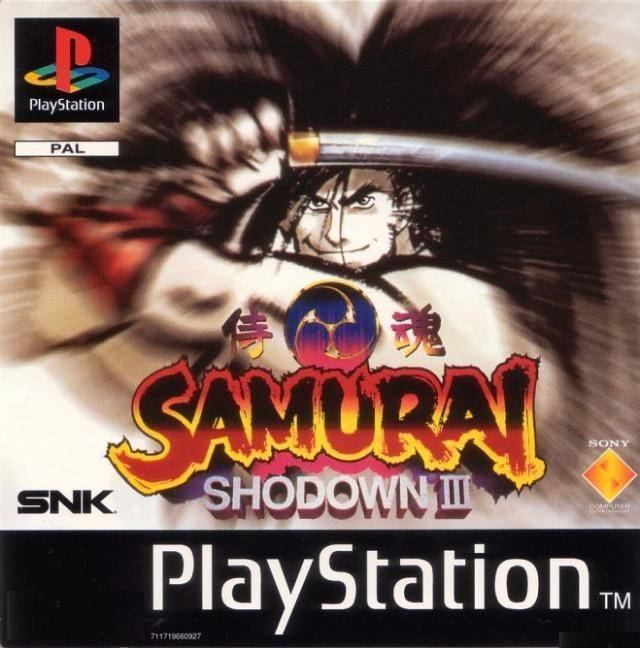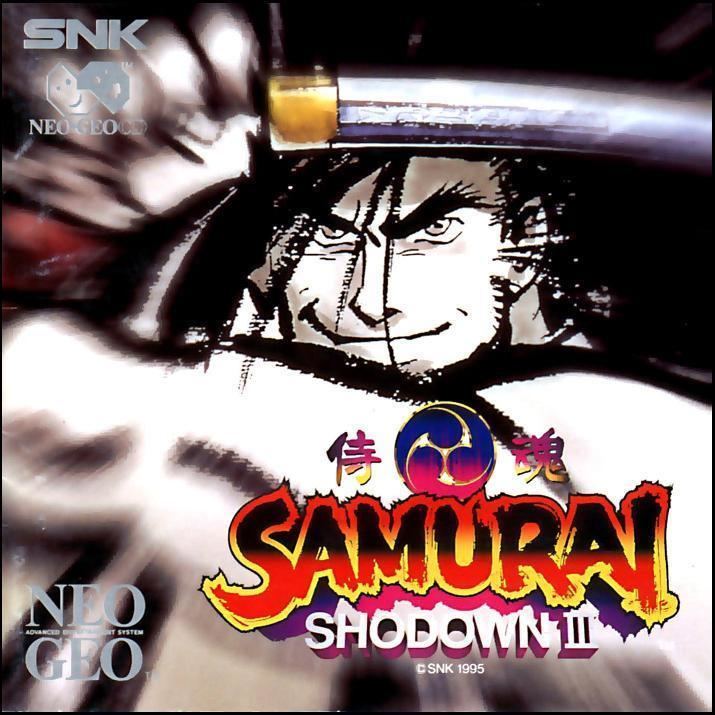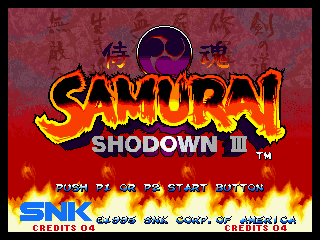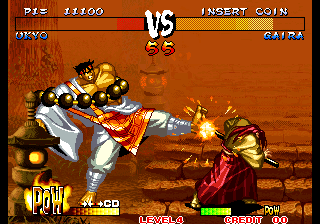Cabinet Upright | Initial release date 15 November 1995 | |
 | ||
Mode(s) Single-player, multiplayer Arcade system Neo Geo (282 Mbit cartridge) Display Raster, 304 x 224 pixels (Horizontal), 4096 colors Similar Samurai Shodown games, SNK games, Fighting games | ||
Psx longplay 276 samurai shodown iii blades of blood
Samurai Shodown III: Blades of Blood, known as Samurai Spirits: Zankuro Musouken (サムライスピリッツ 斬紅郎無双剣) in Japan and Fighters Swords in Korea, released on November 15, 1995. It is the third game in SNK's popular Samurai Shodown series of fighting games for the Neo Geo. While it is the third game in the main series, it is the first part of a two-chapter story set between Samurai Shodown and Samurai Shodown II.
Contents
- Psx longplay 276 samurai shodown iii blades of blood
- Samurai shodown iii blades of blood ps one
- Gameplay
- Characters
- Release
- Reception
- References

Samurai shodown iii blades of blood ps one
Gameplay

Compared to the others in the series, the game has a darker aesthetic. The more light-hearted characters (Earthquake, Cham Cham, and Gen-an) from the previous games have been excised, and the kabuki master, Kyoshiro Senryo, received a redesign, transforming him from a flamboyant stage performer into a grim-faced, muscular man. All of the characters have been completely redrawn.

Along with the aesthetic overhaul came significant changes in the gameplay, such as the addition of two selectable versions of each character.


Also, the button layout was changed, mapping the first three of the four available buttons to weak, medium and strong slash attacks, respectively. The fourth button was used for kick attacks.
The pace of the game shifted somewhat, as many basic attacks could now be canceled into special moves, something which was extremely rare in the first two installments. Most of Samurai Shodown 2's movement options had been removed, in favor of the ability to dodge attacks by pressing the A and B buttons simultaneously. When close, performing this command results in a quick switch-around to the opponent's back, which can then be followed up by other attacks. It is also possible to block attacks in mid-air. Items are also thrown onto the battlefield from off-screen as opposed from a delivery man running in the background.
Characters
Haohmaru's role in the story was diminished, in favor of the new main character, and the overall story is smaller in scope. The returning characters from the previous game are:
New warriors added to the series included the following:
Release
Like Samurai Shodown, Samurai Shodown III was released on multiple consoles other than the Neo Geo and Neo Geo CD such as the Sega Saturn, PlayStation, and even a Game Boy version known as "Nettou Samurai Spirits: Zankuro Musouken" with Super Game Boy support capabilities. Unlike the arcade and console versions, the Game Boy version lacks Kyoshiro Senryo and Gaira Caffeine but adds Jubei Yagyu back to the roster as a hidden final boss exclusively for the game. The handheld version also builds on adding three exclusive Samurai Shodown III borders for Super Game Boy users, one being the default border, the second shown after the two bosses are unlocked and the third one used for the endings. Like the first Game Boy version of Samurai Shodown, the GB version of Samurai Shodown III also features full color art via SGB, new victory speeches, story intro for all characters, new POW super moves similar to the console versions, Bust and Slash versions of all characters, cutscenes in between matches, a Kuroko mirror match, and a two-player vs. mode via link cable or Super Game Boy. For the first time in a portable Samurai Shodown game, blood was also featured (but only in black dripping color). The Game Boy port was released only in Japan by developers Takara, the same team responsible for the porting of several other SNK arcade games to multiple consoles and handhelds.
This game is also released in Japan on the Wii Virtual Console on April 27, 2010 and later in the PAL region on September 3, 2010 and North America on September 6, 2010.
Reception
Samurai Shodown III received moderately positive reviews. Reviewing the Neo Geo AES version, Electronic Gaming Monthly remarked that the graphics are not as good as the first two games in the series and that the Neo Geo controller makes it difficult to pull off some moves, but they greatly praised the large number of characters and the two different personas for each character, and in general rated the gameplay as superior to the first two Samurai Shodowns. They scored the game a 7.25/10. Major Mike of GamePro commented that impressive innovations such as the multiple personas and the sidestep ability are to an extent countered by the omission on some of the best characters from the previous games and the less impressive backgrounds. He concluded that "While Shodown III won't disappoint fans of the series, it isn't the jump that Shodown II was over I." Maximum assessed the Neo Geo CD version as "an excellently detailed and extremely playable beat 'em up, maintaining SNK's usual high standards." They particularly praised the fact that character alignment affects the gameplay instead of just cosmetic differences, the much improved balance of the characters, the constantly moving backgrounds, and the highly experimental soundtrack. Remarking that the game's one major problem is that it is irritatingly difficult, they gave it 4 out of 5 stars.
Gamepro described the PlayStation version as "a lousy port of an equally bad NeoGeo game", citing missing frames of animation, slowdown, and overly drawn-out fights. GameSpot also commented on the missing frames of animation and slowdown in the PlayStation version, and additionally criticized the "excruciatingly long" loading times, but nonetheless concluded that "Those who loved the arcade game version of Samurai Shodown III will be happy with this conversion." and gave it a 6.7/10.
At GameRankings, it holds a rating of 51% for the PS port and 72% for the Neo Geo port.
